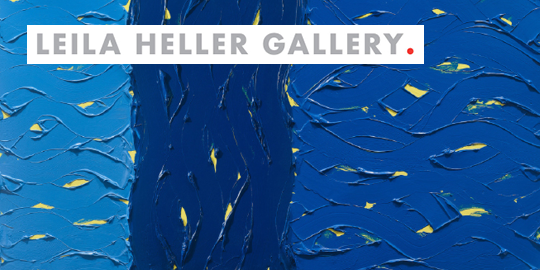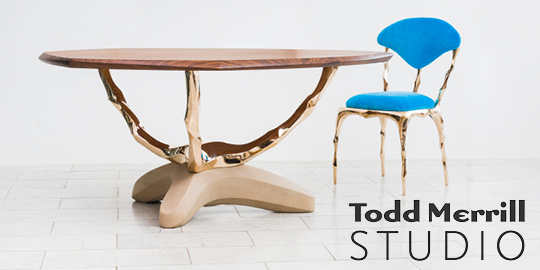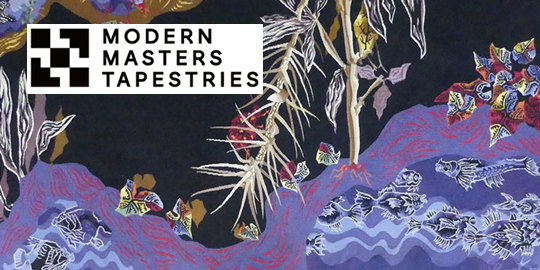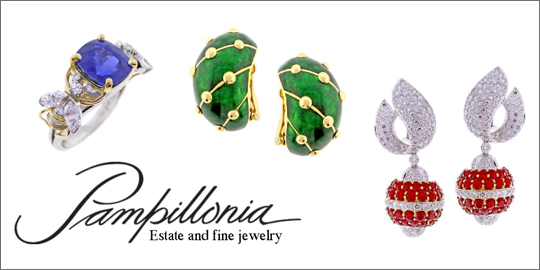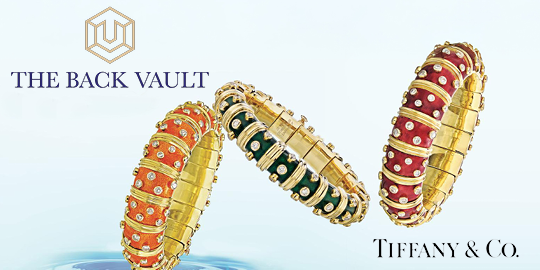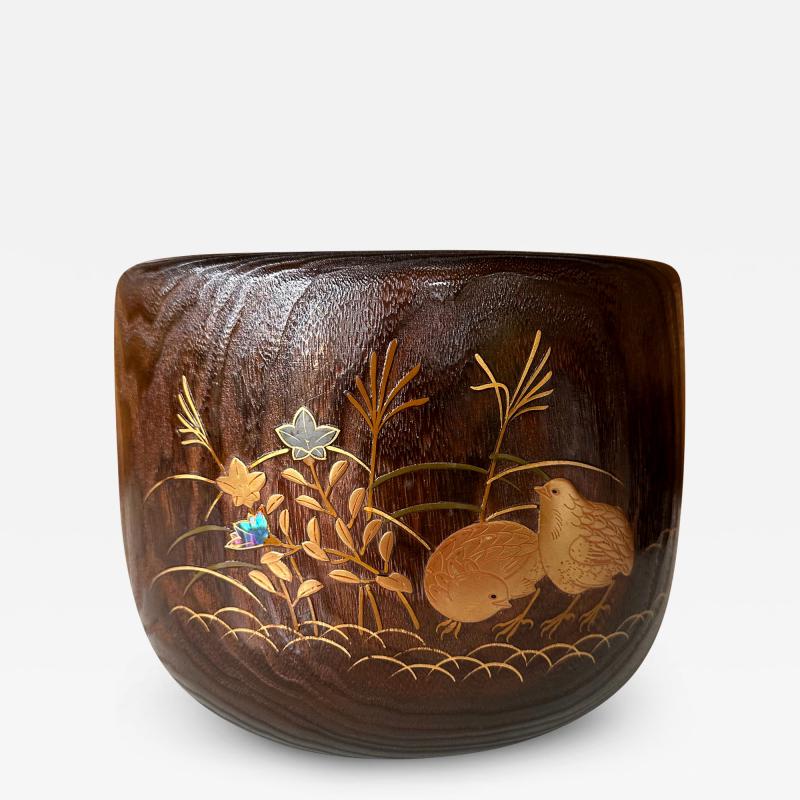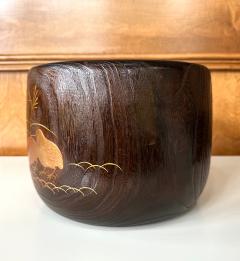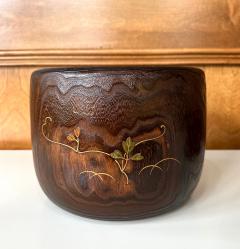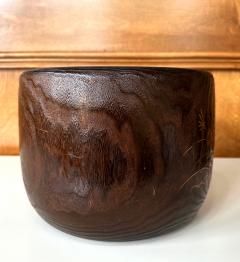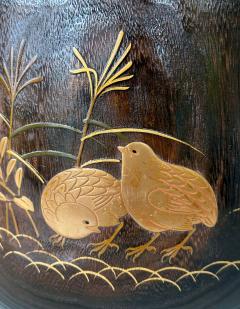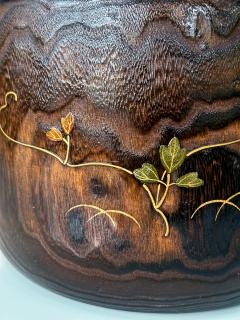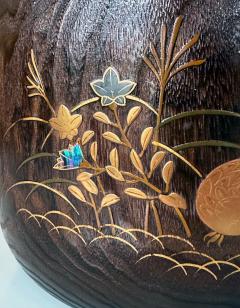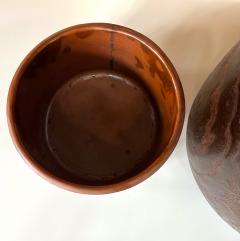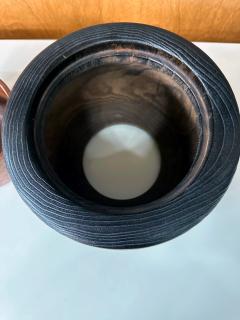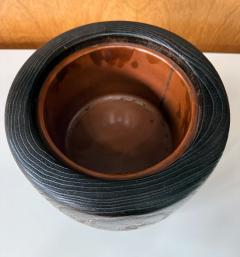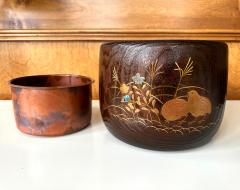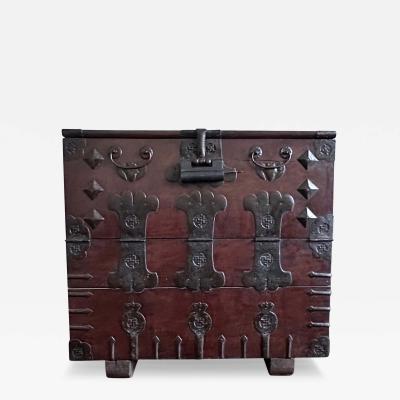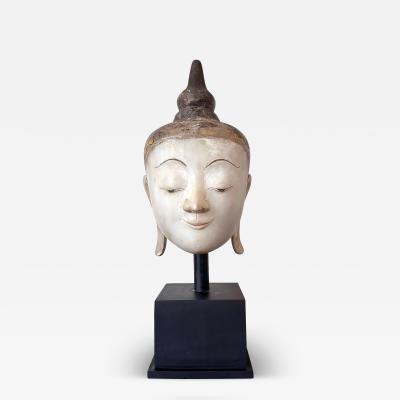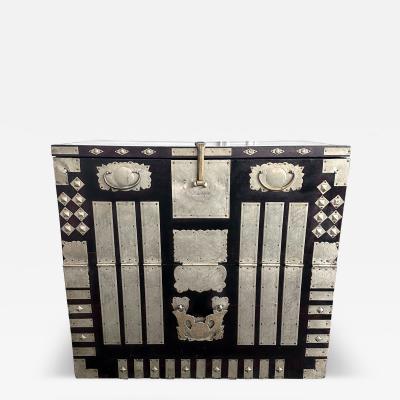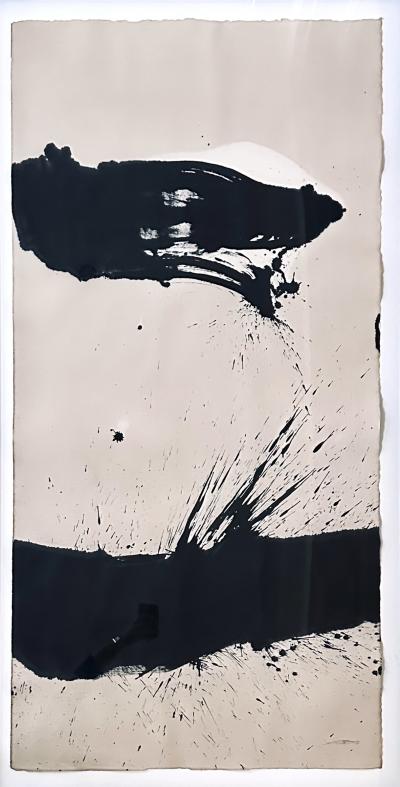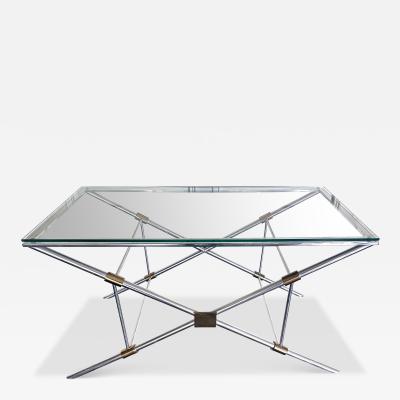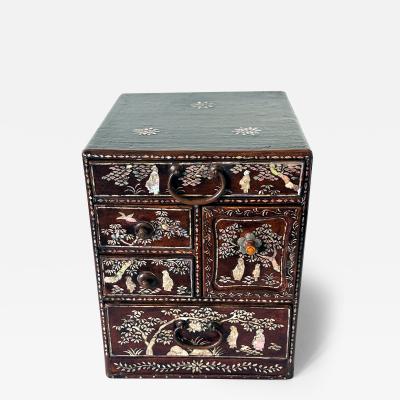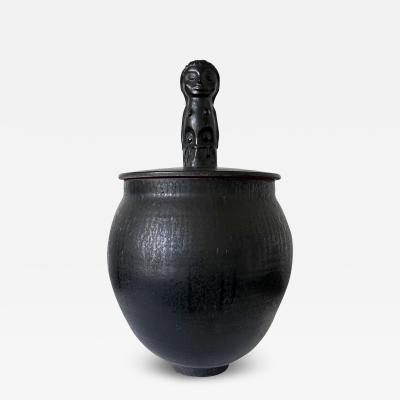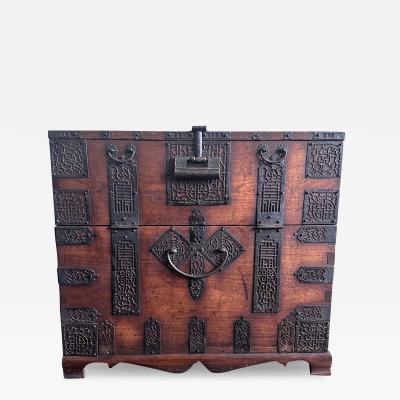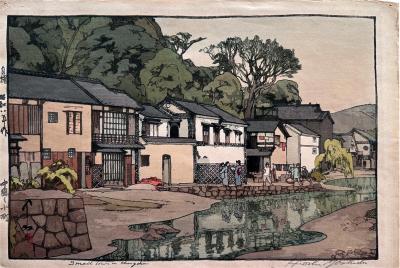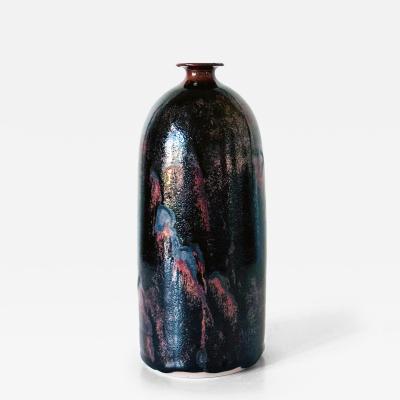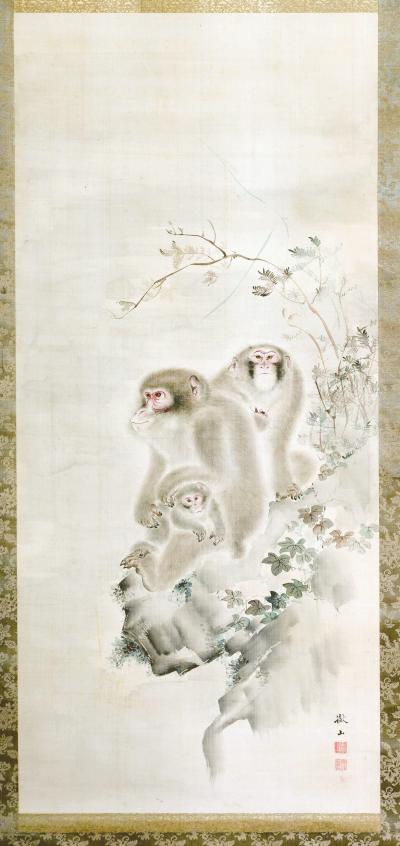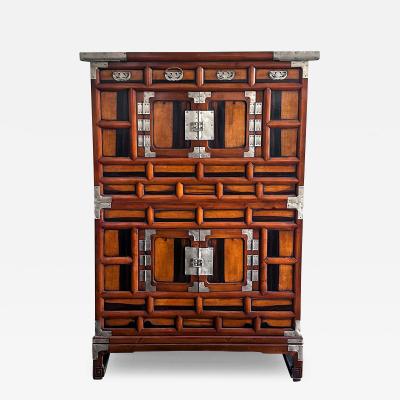Fine Japanese Hibachi Lacquer with Inlays Meiji Period
-
Description
A fine Japanese wood Hibachi with copper insert circa 1900-30s end of Meiji to Taisho Period. It can be used as a unique planter or to showcase an ikebana design.
Hibachi means "fire bowl" in Japanese and its origin dates back to Heian Period. It was traditionally used as a heating device with the ash and coal placed in the insert container. In late Meiji period, it started to be used as an occasional device to heat the water for tea or small pieces of food.
The Hibachi on offer was made from paulownia wood with its expressive grain pattern (it was carved and turned out of a tree trunk). The surface was decorated with a lovely image with a pair of young birds next to a cluster of grasses and flowers at the edge of a water. The floral petals were inlays with mother of pearl. The back side was decorated with a scrolling vine pattern. It has a copper insert which shows age-related patina. -
More Information
Origin: Japan Period: 1900-1919 Materials: Paulownia, copper Condition: Good. Good condition, surface well lacquered and shows only minor nicks, marks and scratches. Copper insert shows wear and patina expected from age and some gentle use. Creation Date: 1900-1930s Styles / Movements: Asian, Traditional Patterns: Animal/Insects, Asian/Oriental, Handmade Incollect Reference #: 725838 -
Dimensions
H. 7 in; Diam. 10 in; H. 17.78 cm; Diam. 25.4 cm;
Message from Seller:
Tishu, based in Atlanta, GA, offers a diverse collection ranging from Neolithic art to 20th-century collectibles, with a focus on Mid-century design, Japanese and Korean art, Asian textiles, and Contemporary Aboriginal art. Driven by a passion for timeless beauty, the gallery is open by appointment only and offers works that span 5,000 years of history. Reach them at 305-400-0561 or tishu@tishugallery.com.


